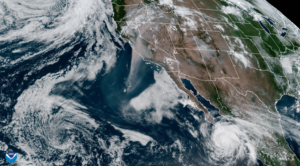Meet Dr. Peter Romanov, currently working on his sponsored project, “Development of a New Global 4-km Multi-Decadal Snow Cover Extent/Snow Water Equivalent/Snow Depth Dataset from Blended In-Situ and Satellite Observations”
Dr. Peter Romanov is a Senior Research Scientist at the CUNY City College of New York. His research interests include climatology, hydrology and remote sensing . He is currently the main PI in the project titled, “Development of a New Global 4-km Multi-Decadal Snow Cover Extent/Snow Water Equivalent/Snow Depth Dataset from Blended In-Situ and Satellite Observations”
PI: Peter Romanov, CREST Institute, City University of New York (CUNY), New York, NY 10031
Co-PIs: Cezar Kongoli, ESSIC University of Maryland, College Park, MD, 20740
Michael Barlage, NOAA/NCEP/EMC, College Park, MD
Project Description
Large-scale high resolution (1-4 km) estimates of snowpack properties – Snow Cover Area (SCA), Snow Water Equivalent (SWE) and Snow Depth (SD) – over seasonal snow-covered land are needed as inputs to weather, climate and hydrological prediction models. Snow monitoring products that are most frequently used at NOAA, IMS snow charts and USAF SNODEP analysis, have shortcomings in temporal consistency, coverage and/or spatial resolution. The primary goal of the project consists in the improvement of the snow cover characterization and in the development of a new enhanced global snow cover dataset using available remote sensing data.
The new dataset will include global information on three major snow cover properties: The snow cover extent, snow water equivalent and on the snow depth. The developed retrieval algorithm provides fully automated processing and interpretation of satellite observations combined with snow reports from ground-based weather stations. All snow products will be generated daily at 4 km spatial resolution. The data processing effort incorporates satellite and surface observations since 1987 and thus will result in creation of a climate-grade snow dataset spanning over more than three decades. The new snow retrieval system will be prepared for operational implementation and further operational use at NOAA NESDIS
Completion of the project is expected in 2023.


